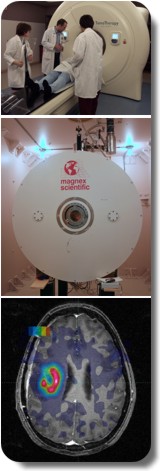Medical Physics
Medical Physics is a profession and research discipline involving the application of physics principles in medical diagnosis and treatment. Research activities range from fundamental to translational (laboratory bench to treatment couch). The Division and the Cross Cancer Institute have accomplished research milestones and acquired expertise that is recognized worldwide. Principal focus is on:
Radiation Oncology
The treatment of cancer by ionizing radiation
Diagnostic Radiology
Diagnostic imaging with x-rays, ultrasound and nuclear magnetic resonance
Nuclear Medicine
Diagnostic imaging with radioisotopes
Health Physics
The study of radiation hazards and radiation protection
The Division of Medical Physics is committed to excellence in teaching and research, and leadership in the application of physics and engineering principles to cancer care.
The Division offers thesis-based MSc and PhD Degrees in Medical Physics, as well as Medical Physics resident training in radiation therapy and diagnostic imaging. Its aim is to provide each student and resident with a superior education and experience in medical physics. The Medical Physics Graduate Program and the two Medical Physics Residency Programs are all accredited by the internationally recognized Commission on Accreditation of Medical Physics Educational Programs (CAMPEP).
Graduate Program Residency Program
All Medical Physicists in the Division have clinical, academic/teaching and research responsibilities. Along with an excellent complement of graduate students and technical personnel, members of the Division of Medical Physics are committed to providing leadership in the application of physics and engineering principles to cancer care.

Medical Physics Division research highlights:
-
Produced the world's first MR image during linear accelerator irradiation using a linear accelerator-Magnetic Resonance (linac-MR) hybrid system in December 2008.The Division's original work integrating a linear accelerator (linac) with a magnetic resonance imaging (MRI) system features:
- 0.5 T MRI
- 6 MV linac
- 60 cm field
- The Image-Guided Adaptive Radiotherapy (IGAR) research program is unique and makes the Cross Cancer Institute a world leader in cancer molecular imaging and adaptive radiation therapy. Equipment includes:
- Small bore 9.4T MR Imaging and Spectroscopy System
- Very-high field (3T) whole body MR Imaging and Spectroscopy System
- First Helical TomoTherapy™ unit in Canada was installed at the Cross Cancer Institute (CCI). The first patient was imaged on the TomoTherapy unit in June 2004, and the first protocol patients started treatment in July 2004.
-
Research has begun involving the recently opened Biomedical Beam Line of the Canadian Light Source in Saskatoon.
-
First Canadian cancer centre to accrue patients to the Radiation Therapy Oncology Group (RTOG) prostate, lung and bioblastoma 3D Conformal Radiation Therapy (3D-CRT) clinical trials.
-
The Cross Cancer Institute became an international leader in Intensity Modulated Radiation Therapy (IMRT) in 2000. The first patient in Canada using IMRT with inverse treatment planning began treatment at the CCI in April that year.